Artificial Intelligence
Artificial intelligence (AI), the ability of a digital computer or computer-controlled robot to perform tasks commonly associated with intelligent beings. The term is frequently applied to the project of developing systems endowed with the intellectual processes characteristic of humans, such as the ability to reason, discover meaning, generalize, or learn from past experience. Since the development of the digital computer in the 1940s, it has been demonstrated that computers can be programmed to carry out very complex tasks—such as discovering proofs for mathematical theorems or playing chess—with great proficiency. Still, despite continuing advances in computer processing speed and memory capacity, there are as yet no programs that can match full human flexibility over wider domains or in tasks requiring much everyday knowledge. On the other hand, some programs have attained the performance levels of human experts and professionals in performing certain specific tasks, so that artificial intelligence in this limited sense is found in applications as diverse as medical diagnosis, computer search engines, voice or handwriting recognition, and chatbots.
 Artificial intelligence (AI) technology is widely used throughout industry, government and science. Some high-profile applications are: advanced web search engines (e.g., Google Search), recommendation systems (used by YouTube, Amazon, and Netflix), understanding human speech (such as Siri and Alexa), self-driving cars (e.g., Waymo), generative or creative tools (ChatGPT and AI art), and competing at the highest level in strategy games (such as chess and Go).
Artificial intelligence (AI) technology is widely used throughout industry, government and science. Some high-profile applications are: advanced web search engines (e.g., Google Search), recommendation systems (used by YouTube, Amazon, and Netflix), understanding human speech (such as Siri and Alexa), self-driving cars (e.g., Waymo), generative or creative tools (ChatGPT and AI art), and competing at the highest level in strategy games (such as chess and Go).
 Artificial intelligence was founded as an academic discipline in 1956. The field went through multiple cycles of optimism followed by disappointment and loss of funding, but after 2012, when deep learning surpassed all previous AI techniques, there was a vast increase in funding and interest.
The various sub-fields of AI research are centered around particular goals and the use of particular tools. The traditional goals of AI research include reasoning, knowledge representation, planning, learning, natural language processing, perception, and support for robotics. General intelligence (the ability to solve an arbitrary problem) is among the field’s long-term goals.
To solve these problems, AI researchers have adapted and integrated a wide range of problem-solving techniques, including search and mathematical optimization, formal logic, artificial neural networks, and methods based on statistics, operations research, and economics. AI also draws upon psychology, linguistics, philosophy, neuroscience and many other fields.
Artificial intelligence was founded as an academic discipline in 1956. The field went through multiple cycles of optimism followed by disappointment and loss of funding, but after 2012, when deep learning surpassed all previous AI techniques, there was a vast increase in funding and interest.
The various sub-fields of AI research are centered around particular goals and the use of particular tools. The traditional goals of AI research include reasoning, knowledge representation, planning, learning, natural language processing, perception, and support for robotics. General intelligence (the ability to solve an arbitrary problem) is among the field’s long-term goals.
To solve these problems, AI researchers have adapted and integrated a wide range of problem-solving techniques, including search and mathematical optimization, formal logic, artificial neural networks, and methods based on statistics, operations research, and economics. AI also draws upon psychology, linguistics, philosophy, neuroscience and many other fields. Goals
The general problem of simulating (or creating) intelligence has been broken down into sub-problems. These consist of particular traits or capabilities that researchers expect an intelligent system to display. The traits described below have received the most attention and cover the scope of AI research.
 Reasoning, problem-solving
Early researchers developed algorithms that imitated step-by-step reasoning that humans use when they solve puzzles or make logical deductions. By the late 1980s and 1990s, methods were developed for dealing with uncertain or incomplete information, employing concepts from probability and economics.
Many of these algorithms are insufficient for solving large reasoning problems because they experience a “combinatorial explosion”: they became exponentially slower as the problems grew larger. Even humans rarely use the step-by-step deduction that early AI research could model. They solve most of their problems using fast, intuitive judgments. Accurate and efficient reasoning is an unsolved problem.
Reasoning, problem-solving
Early researchers developed algorithms that imitated step-by-step reasoning that humans use when they solve puzzles or make logical deductions. By the late 1980s and 1990s, methods were developed for dealing with uncertain or incomplete information, employing concepts from probability and economics.
Many of these algorithms are insufficient for solving large reasoning problems because they experience a “combinatorial explosion”: they became exponentially slower as the problems grew larger. Even humans rarely use the step-by-step deduction that early AI research could model. They solve most of their problems using fast, intuitive judgments. Accurate and efficient reasoning is an unsolved problem.
 Knowledge representation
Knowledge representation and knowledge engineering allow AI programs to answer questions intelligently and make deductions about real-world facts. Formal knowledge representations are used in content-based indexing and retrieval, scene interpretation, clinical decision support, knowledge discovery (mining “interesting” and actionable inferences from large databases), and other areas.
A knowledge base is a body of knowledge represented in a form that can be used by a program. An ontology is the set of objects, relations, concepts, and properties used by a particular domain of knowledge. Knowledge bases need to represent things such as: objects, properties, categories and relations between objects; situations, events, states and time; causes and effects; knowledge about knowledge (what we know about what other people know); default reasoning (things that humans assume are true until they are told differently and will remain true even when other facts are changing); and many other aspects and domains of knowledge.
Knowledge representation
Knowledge representation and knowledge engineering allow AI programs to answer questions intelligently and make deductions about real-world facts. Formal knowledge representations are used in content-based indexing and retrieval, scene interpretation, clinical decision support, knowledge discovery (mining “interesting” and actionable inferences from large databases), and other areas.
A knowledge base is a body of knowledge represented in a form that can be used by a program. An ontology is the set of objects, relations, concepts, and properties used by a particular domain of knowledge. Knowledge bases need to represent things such as: objects, properties, categories and relations between objects; situations, events, states and time; causes and effects; knowledge about knowledge (what we know about what other people know); default reasoning (things that humans assume are true until they are told differently and will remain true even when other facts are changing); and many other aspects and domains of knowledge.
 Among the most difficult problems in KR are: the breadth of commonsense knowledge (the set of atomic facts that the average person knows is enormous); and the sub-symbolic form of most commonsense knowledge (much of what people know is not represented as “facts” or “statements” that they could express verbally).
Knowledge acquisition is the difficult problem of obtaining knowledge for AI applications. Modern AI gathers knowledge by “scraping” the internet (including Wikipedia). The knowledge itself was collected by the volunteers and professionals who published the information (who may or may not have agreed to provide their work to AI companies).
This “crowd sourced” technique does not guarantee that the knowledge is correct or reliable. The knowledge of Large Language Models (such as ChatGPT) is highly unreliable — it generates misinformation and falsehoods (known as “hallucinations”). Providing accurate knowledge for these modern AI applications is an unsolved problem.
Among the most difficult problems in KR are: the breadth of commonsense knowledge (the set of atomic facts that the average person knows is enormous); and the sub-symbolic form of most commonsense knowledge (much of what people know is not represented as “facts” or “statements” that they could express verbally).
Knowledge acquisition is the difficult problem of obtaining knowledge for AI applications. Modern AI gathers knowledge by “scraping” the internet (including Wikipedia). The knowledge itself was collected by the volunteers and professionals who published the information (who may or may not have agreed to provide their work to AI companies).
This “crowd sourced” technique does not guarantee that the knowledge is correct or reliable. The knowledge of Large Language Models (such as ChatGPT) is highly unreliable — it generates misinformation and falsehoods (known as “hallucinations”). Providing accurate knowledge for these modern AI applications is an unsolved problem.
 Reasoning, problem-solving
Early researchers developed algorithms that imitated step-by-step reasoning that humans use when they solve puzzles or make logical deductions. By the late 1980s and 1990s, methods were developed for dealing with uncertain or incomplete information, employing concepts from probability and economics.
Many of these algorithms are insufficient for solving large reasoning problems because they experience a “combinatorial explosion”: they became exponentially slower as the problems grew larger. Even humans rarely use the step-by-step deduction that early AI research could model. They solve most of their problems using fast, intuitive judgments. Accurate and efficient reasoning is an unsolved problem.
Reasoning, problem-solving
Early researchers developed algorithms that imitated step-by-step reasoning that humans use when they solve puzzles or make logical deductions. By the late 1980s and 1990s, methods were developed for dealing with uncertain or incomplete information, employing concepts from probability and economics.
Many of these algorithms are insufficient for solving large reasoning problems because they experience a “combinatorial explosion”: they became exponentially slower as the problems grew larger. Even humans rarely use the step-by-step deduction that early AI research could model. They solve most of their problems using fast, intuitive judgments. Accurate and efficient reasoning is an unsolved problem.
 Knowledge representation
Knowledge representation and knowledge engineering allow AI programs to answer questions intelligently and make deductions about real-world facts. Formal knowledge representations are used in content-based indexing and retrieval, scene interpretation, clinical decision support, knowledge discovery (mining “interesting” and actionable inferences from large databases), and other areas.
A knowledge base is a body of knowledge represented in a form that can be used by a program. An ontology is the set of objects, relations, concepts, and properties used by a particular domain of knowledge. Knowledge bases need to represent things such as: objects, properties, categories and relations between objects; situations, events, states and time; causes and effects; knowledge about knowledge (what we know about what other people know); default reasoning (things that humans assume are true until they are told differently and will remain true even when other facts are changing); and many other aspects and domains of knowledge.
Knowledge representation
Knowledge representation and knowledge engineering allow AI programs to answer questions intelligently and make deductions about real-world facts. Formal knowledge representations are used in content-based indexing and retrieval, scene interpretation, clinical decision support, knowledge discovery (mining “interesting” and actionable inferences from large databases), and other areas.
A knowledge base is a body of knowledge represented in a form that can be used by a program. An ontology is the set of objects, relations, concepts, and properties used by a particular domain of knowledge. Knowledge bases need to represent things such as: objects, properties, categories and relations between objects; situations, events, states and time; causes and effects; knowledge about knowledge (what we know about what other people know); default reasoning (things that humans assume are true until they are told differently and will remain true even when other facts are changing); and many other aspects and domains of knowledge.
 Among the most difficult problems in KR are: the breadth of commonsense knowledge (the set of atomic facts that the average person knows is enormous); and the sub-symbolic form of most commonsense knowledge (much of what people know is not represented as “facts” or “statements” that they could express verbally).
Knowledge acquisition is the difficult problem of obtaining knowledge for AI applications. Modern AI gathers knowledge by “scraping” the internet (including Wikipedia). The knowledge itself was collected by the volunteers and professionals who published the information (who may or may not have agreed to provide their work to AI companies).
This “crowd sourced” technique does not guarantee that the knowledge is correct or reliable. The knowledge of Large Language Models (such as ChatGPT) is highly unreliable — it generates misinformation and falsehoods (known as “hallucinations”). Providing accurate knowledge for these modern AI applications is an unsolved problem.
Among the most difficult problems in KR are: the breadth of commonsense knowledge (the set of atomic facts that the average person knows is enormous); and the sub-symbolic form of most commonsense knowledge (much of what people know is not represented as “facts” or “statements” that they could express verbally).
Knowledge acquisition is the difficult problem of obtaining knowledge for AI applications. Modern AI gathers knowledge by “scraping” the internet (including Wikipedia). The knowledge itself was collected by the volunteers and professionals who published the information (who may or may not have agreed to provide their work to AI companies).
This “crowd sourced” technique does not guarantee that the knowledge is correct or reliable. The knowledge of Large Language Models (such as ChatGPT) is highly unreliable — it generates misinformation and falsehoods (known as “hallucinations”). Providing accurate knowledge for these modern AI applications is an unsolved problem.

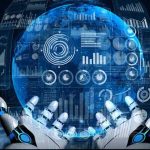



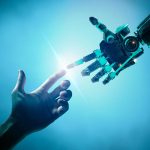
 Planning and decision making
An “agent” is anything that perceives and takes actions in the world. A rational agent has goals or preferences and takes actions to make them happen. In automated planning, the agent has a specific goal. In automated decision making, the agent has preferences – there are some situations it would prefer to be in, and some situations it is trying to avoid.
The decision-making agent assigns a number to each situation (called the “utility”) that measures how much the agent prefers it. For each possible action, it can calculate the “expected utility”: the utility of all possible outcomes of the action, weighted by the probability that the outcome will occur. It can then choose the action with the maximum expected utility.
Planning and decision making
An “agent” is anything that perceives and takes actions in the world. A rational agent has goals or preferences and takes actions to make them happen. In automated planning, the agent has a specific goal. In automated decision making, the agent has preferences – there are some situations it would prefer to be in, and some situations it is trying to avoid.
The decision-making agent assigns a number to each situation (called the “utility”) that measures how much the agent prefers it. For each possible action, it can calculate the “expected utility”: the utility of all possible outcomes of the action, weighted by the probability that the outcome will occur. It can then choose the action with the maximum expected utility.
 In classical planning, the agent knows exactly what the effect of any action will be. In most real-world problems, however, the agent may not be certain about the situation they are in (it is “unknown” or “unobservable”) and it may not know for certain what will happen after each possible action (it is not “deterministic”). It must choose an action by making a probabilistic guess and then reassess the situation to see if the action worked.
In some problems, the agent’s preferences may be uncertain, especially if there are other agents or humans involved. These can be learned (e.g., with inverse reinforcement learning) or the agent can seek information to improve its preferences. Information value theory can be used to weigh the value of exploratory or experimental actions. The space of possible future actions and situations is typically intractably large, so the agents must take actions and evaluate situations while being uncertain what the outcome will be.
In classical planning, the agent knows exactly what the effect of any action will be. In most real-world problems, however, the agent may not be certain about the situation they are in (it is “unknown” or “unobservable”) and it may not know for certain what will happen after each possible action (it is not “deterministic”). It must choose an action by making a probabilistic guess and then reassess the situation to see if the action worked.
In some problems, the agent’s preferences may be uncertain, especially if there are other agents or humans involved. These can be learned (e.g., with inverse reinforcement learning) or the agent can seek information to improve its preferences. Information value theory can be used to weigh the value of exploratory or experimental actions. The space of possible future actions and situations is typically intractably large, so the agents must take actions and evaluate situations while being uncertain what the outcome will be.
 A Markov decision process has a transition model that describes the probability that a particular action will change the state in a particular way, and a reward function that supplies the utility of each state and the cost of each action. A policy associates a decision with each possible state. The policy could be calculated (e.g. by iteration), be heuristic, or it can be learned.
Game theory describes rational behavior of multiple interacting agents, and is used in AI programs that make decisions that involve other agents.
A Markov decision process has a transition model that describes the probability that a particular action will change the state in a particular way, and a reward function that supplies the utility of each state and the cost of each action. A policy associates a decision with each possible state. The policy could be calculated (e.g. by iteration), be heuristic, or it can be learned.
Game theory describes rational behavior of multiple interacting agents, and is used in AI programs that make decisions that involve other agents.  Learning
Machine learning is the study of programs that can improve their performance on a given task automatically. It has been a part of AI from the beginning.
There are several kinds of machine learning. Unsupervised learning analyzes a stream of data and finds patterns and makes predictions without any other guidance. Supervised learning requires a human to label the input data first, and comes in two main varieties: classification (where the program must learn to predict what category the input belongs in) and regression (where the program must deduce a numeric function based on numeric input). In reinforcement learning the agent is rewarded for good responses and punished for bad ones. The agent learns to choose responses that are classified as “good”. Transfer learning is when the knowledge gained from one problem is applied to a new problem. Deep learning is a type of machine learning that runs inputs through biologically inspired artificial neural networks for all of these types of learning.
Learning
Machine learning is the study of programs that can improve their performance on a given task automatically. It has been a part of AI from the beginning.
There are several kinds of machine learning. Unsupervised learning analyzes a stream of data and finds patterns and makes predictions without any other guidance. Supervised learning requires a human to label the input data first, and comes in two main varieties: classification (where the program must learn to predict what category the input belongs in) and regression (where the program must deduce a numeric function based on numeric input). In reinforcement learning the agent is rewarded for good responses and punished for bad ones. The agent learns to choose responses that are classified as “good”. Transfer learning is when the knowledge gained from one problem is applied to a new problem. Deep learning is a type of machine learning that runs inputs through biologically inspired artificial neural networks for all of these types of learning.
 Computational learning theory can assess learners by computational complexity, by sample complexity (how much data is required), or by other notions of optimization.
Natural language processing
Natural language processing (NLP) allows programs to read, write and communicate in human languages such as English. Specific problems include speech recognition, speech synthesis, machine translation, information extraction, information retrieval and question answering.
Early work, based on Noam Chomsky’s generative grammar and semantic networks, had difficulty with word-sense disambiguation unless restricted to small domains called “micro-worlds” (due to the common sense knowledge problem).
Computational learning theory can assess learners by computational complexity, by sample complexity (how much data is required), or by other notions of optimization.
Natural language processing
Natural language processing (NLP) allows programs to read, write and communicate in human languages such as English. Specific problems include speech recognition, speech synthesis, machine translation, information extraction, information retrieval and question answering.
Early work, based on Noam Chomsky’s generative grammar and semantic networks, had difficulty with word-sense disambiguation unless restricted to small domains called “micro-worlds” (due to the common sense knowledge problem).
 Modern deep learning techniques for NLP include word embedding (how often one word appears near another), transformers (which finds patterns in text), and others. In 2019, generative pre-trained transformer (or “GPT”) language models began to generate coherent text, and by 2023 these models were able to get human-level scores on the bar exam, SAT, GRE, and many other real-world applications.
Perception
Machine perception is the ability to use input from sensors (such as cameras, microphones, wireless signals, active lidar, sonar, radar, and tactile sensors) to deduce aspects of the world. Computer vision is the ability to analyze visual input.
The field includes speech recognition, image classification, facial recognition, object recognition, and robotic perception.
Modern deep learning techniques for NLP include word embedding (how often one word appears near another), transformers (which finds patterns in text), and others. In 2019, generative pre-trained transformer (or “GPT”) language models began to generate coherent text, and by 2023 these models were able to get human-level scores on the bar exam, SAT, GRE, and many other real-world applications.
Perception
Machine perception is the ability to use input from sensors (such as cameras, microphones, wireless signals, active lidar, sonar, radar, and tactile sensors) to deduce aspects of the world. Computer vision is the ability to analyze visual input.
The field includes speech recognition, image classification, facial recognition, object recognition, and robotic perception.
 Social Intelligence
Affective computing is an interdisciplinary umbrella that comprises systems that recognize, interpret, process or simulate human feeling, emotion and mood. For example, some virtual assistants are programmed to speak conversationally or even to banter humorously; it makes them appear more sensitive to the emotional dynamics of human interaction, or to otherwise facilitate human–computer interaction.
However, this tends to give naïve users an unrealistic conception of how intelligent existing computer agents actually are. Moderate successes related to affective computing include textual sentiment analysis and, more recently, multimodal sentiment analysis, wherein AI classifies the affects displayed by a videotaped subject.
A machine with artificial general intelligence should be able to solve a wide variety of problems with breadth and versatility similar to human intelligence.
Social Intelligence
Affective computing is an interdisciplinary umbrella that comprises systems that recognize, interpret, process or simulate human feeling, emotion and mood. For example, some virtual assistants are programmed to speak conversationally or even to banter humorously; it makes them appear more sensitive to the emotional dynamics of human interaction, or to otherwise facilitate human–computer interaction.
However, this tends to give naïve users an unrealistic conception of how intelligent existing computer agents actually are. Moderate successes related to affective computing include textual sentiment analysis and, more recently, multimodal sentiment analysis, wherein AI classifies the affects displayed by a videotaped subject.
A machine with artificial general intelligence should be able to solve a wide variety of problems with breadth and versatility similar to human intelligence. 
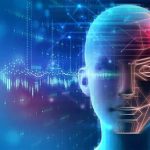
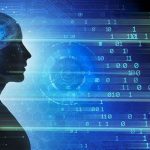

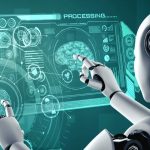

Artificial Intelligence
on the globe 2021 – 2024
($B) venture funding in AI
0
($B) corporate investment in AI
0
($B) overall investment in AI
0
Tools
ToolsAI research uses a wide variety of tools to accomplish the goals above.
 Search and optimization
AI can solve many problems by intelligently searching through many possible solutions. There are two very different kinds of search used in AI: state space search and local search.
State space search
State space search searches through a tree of possible states to try to find a goal state. For example, Planning algorithms search through trees of goals and subgoals, attempting to find a path to a target goal, a process called means-ends analysis.
Simple exhaustive searches are rarely sufficient for most real-world problems: the search space (the number of places to search) quickly grows to astronomical numbers. The result is a search that is too slow or never completes. “Heuristics” or “rules of thumb” can help to prioritize choices that are more likely to reach a goal.
Search and optimization
AI can solve many problems by intelligently searching through many possible solutions. There are two very different kinds of search used in AI: state space search and local search.
State space search
State space search searches through a tree of possible states to try to find a goal state. For example, Planning algorithms search through trees of goals and subgoals, attempting to find a path to a target goal, a process called means-ends analysis.
Simple exhaustive searches are rarely sufficient for most real-world problems: the search space (the number of places to search) quickly grows to astronomical numbers. The result is a search that is too slow or never completes. “Heuristics” or “rules of thumb” can help to prioritize choices that are more likely to reach a goal.
 Adversarial search is used for game-playing programs, such as chess or Go. It searches through a tree of possible moves and counter-moves, looking for a winning position.
Local search
Local search uses mathematical optimization to find a numeric solution to a problem. It begins with some form of a guess and then refines the guess incrementally until no more refinements can be made. These algorithms can be visualized as blind hill climbing: we begin the search at a random point on the landscape, and then, by jumps or steps, we keep moving our guess uphill, until we reach the top. This process is called stochastic gradient descent.
Evolutionary computation uses a form of optimization search. For example, they may begin with a population of organisms (the guesses) and then allow them to mutate and recombine, selecting only the fittest to survive each generation (refining the guesses).
Adversarial search is used for game-playing programs, such as chess or Go. It searches through a tree of possible moves and counter-moves, looking for a winning position.
Local search
Local search uses mathematical optimization to find a numeric solution to a problem. It begins with some form of a guess and then refines the guess incrementally until no more refinements can be made. These algorithms can be visualized as blind hill climbing: we begin the search at a random point on the landscape, and then, by jumps or steps, we keep moving our guess uphill, until we reach the top. This process is called stochastic gradient descent.
Evolutionary computation uses a form of optimization search. For example, they may begin with a population of organisms (the guesses) and then allow them to mutate and recombine, selecting only the fittest to survive each generation (refining the guesses).
 Distributed search processes can coordinate via swarm intelligence algorithms. Two popular swarm algorithms used in search are particle swarm optimization (inspired by bird flocking) and ant colony optimization (inspired by ant trails).
Neural networks and statistical classifiers (discussed below), also use a form of local search, where the “landscape” to be searched is formed by learning.
Logic
Formal Logic is used for reasoning and knowledge representation. Formal logic comes in two main forms: propositional logic (which operates on statements that are true or false and uses logical connectives such as “and”, “or”, “not” and “implies”) and predicate logic (which also operates on objects, predicates and relations and uses quantifiers such as “Every X is a Y” and “There are some Xs that are Ys”).
Distributed search processes can coordinate via swarm intelligence algorithms. Two popular swarm algorithms used in search are particle swarm optimization (inspired by bird flocking) and ant colony optimization (inspired by ant trails).
Neural networks and statistical classifiers (discussed below), also use a form of local search, where the “landscape” to be searched is formed by learning.
Logic
Formal Logic is used for reasoning and knowledge representation. Formal logic comes in two main forms: propositional logic (which operates on statements that are true or false and uses logical connectives such as “and”, “or”, “not” and “implies”) and predicate logic (which also operates on objects, predicates and relations and uses quantifiers such as “Every X is a Y” and “There are some Xs that are Ys”).
 Logical inference (or deduction) is the process of proving a new statement (conclusion) from other statements that are already known to be true (the premises). A logical knowledge base also handles queries and assertions as a special case of inference. An inference rule describes what is a valid step in a proof.
The most general inference rule is resolution. Inference can be reduced to performing a search to find a path that leads from premises to conclusions, where each step is the application of an inference rule. Inference performed this way is intractable except for short proofs in restricted domains. No efficient, powerful and general method has been discovered.
Fuzzy logic assigns a “degree of truth” between 0 and 1 and handles uncertainty and probabilistic situations. Non-monotonic logics are designed to handle default reasoning. Other specialized versions of logic have been developed to describe many complex domains (see knowledge representation above).
Logical inference (or deduction) is the process of proving a new statement (conclusion) from other statements that are already known to be true (the premises). A logical knowledge base also handles queries and assertions as a special case of inference. An inference rule describes what is a valid step in a proof.
The most general inference rule is resolution. Inference can be reduced to performing a search to find a path that leads from premises to conclusions, where each step is the application of an inference rule. Inference performed this way is intractable except for short proofs in restricted domains. No efficient, powerful and general method has been discovered.
Fuzzy logic assigns a “degree of truth” between 0 and 1 and handles uncertainty and probabilistic situations. Non-monotonic logics are designed to handle default reasoning. Other specialized versions of logic have been developed to describe many complex domains (see knowledge representation above).
 Search and optimization
AI can solve many problems by intelligently searching through many possible solutions. There are two very different kinds of search used in AI: state space search and local search.
State space search
State space search searches through a tree of possible states to try to find a goal state. For example, Planning algorithms search through trees of goals and subgoals, attempting to find a path to a target goal, a process called means-ends analysis.
Simple exhaustive searches are rarely sufficient for most real-world problems: the search space (the number of places to search) quickly grows to astronomical numbers. The result is a search that is too slow or never completes. “Heuristics” or “rules of thumb” can help to prioritize choices that are more likely to reach a goal.
Search and optimization
AI can solve many problems by intelligently searching through many possible solutions. There are two very different kinds of search used in AI: state space search and local search.
State space search
State space search searches through a tree of possible states to try to find a goal state. For example, Planning algorithms search through trees of goals and subgoals, attempting to find a path to a target goal, a process called means-ends analysis.
Simple exhaustive searches are rarely sufficient for most real-world problems: the search space (the number of places to search) quickly grows to astronomical numbers. The result is a search that is too slow or never completes. “Heuristics” or “rules of thumb” can help to prioritize choices that are more likely to reach a goal.
 Adversarial search is used for game-playing programs, such as chess or Go. It searches through a tree of possible moves and counter-moves, looking for a winning position.
Local search
Local search uses mathematical optimization to find a numeric solution to a problem. It begins with some form of a guess and then refines the guess incrementally until no more refinements can be made. These algorithms can be visualized as blind hill climbing: we begin the search at a random point on the landscape, and then, by jumps or steps, we keep moving our guess uphill, until we reach the top. This process is called stochastic gradient descent.
Evolutionary computation uses a form of optimization search. For example, they may begin with a population of organisms (the guesses) and then allow them to mutate and recombine, selecting only the fittest to survive each generation (refining the guesses).
Adversarial search is used for game-playing programs, such as chess or Go. It searches through a tree of possible moves and counter-moves, looking for a winning position.
Local search
Local search uses mathematical optimization to find a numeric solution to a problem. It begins with some form of a guess and then refines the guess incrementally until no more refinements can be made. These algorithms can be visualized as blind hill climbing: we begin the search at a random point on the landscape, and then, by jumps or steps, we keep moving our guess uphill, until we reach the top. This process is called stochastic gradient descent.
Evolutionary computation uses a form of optimization search. For example, they may begin with a population of organisms (the guesses) and then allow them to mutate and recombine, selecting only the fittest to survive each generation (refining the guesses).
 Distributed search processes can coordinate via swarm intelligence algorithms. Two popular swarm algorithms used in search are particle swarm optimization (inspired by bird flocking) and ant colony optimization (inspired by ant trails).
Neural networks and statistical classifiers (discussed below), also use a form of local search, where the “landscape” to be searched is formed by learning.
Logic
Formal Logic is used for reasoning and knowledge representation. Formal logic comes in two main forms: propositional logic (which operates on statements that are true or false and uses logical connectives such as “and”, “or”, “not” and “implies”) and predicate logic (which also operates on objects, predicates and relations and uses quantifiers such as “Every X is a Y” and “There are some Xs that are Ys”).
Distributed search processes can coordinate via swarm intelligence algorithms. Two popular swarm algorithms used in search are particle swarm optimization (inspired by bird flocking) and ant colony optimization (inspired by ant trails).
Neural networks and statistical classifiers (discussed below), also use a form of local search, where the “landscape” to be searched is formed by learning.
Logic
Formal Logic is used for reasoning and knowledge representation. Formal logic comes in two main forms: propositional logic (which operates on statements that are true or false and uses logical connectives such as “and”, “or”, “not” and “implies”) and predicate logic (which also operates on objects, predicates and relations and uses quantifiers such as “Every X is a Y” and “There are some Xs that are Ys”).
 Logical inference (or deduction) is the process of proving a new statement (conclusion) from other statements that are already known to be true (the premises). A logical knowledge base also handles queries and assertions as a special case of inference. An inference rule describes what is a valid step in a proof.
The most general inference rule is resolution. Inference can be reduced to performing a search to find a path that leads from premises to conclusions, where each step is the application of an inference rule. Inference performed this way is intractable except for short proofs in restricted domains. No efficient, powerful and general method has been discovered.
Fuzzy logic assigns a “degree of truth” between 0 and 1 and handles uncertainty and probabilistic situations. Non-monotonic logics are designed to handle default reasoning. Other specialized versions of logic have been developed to describe many complex domains (see knowledge representation above).
Logical inference (or deduction) is the process of proving a new statement (conclusion) from other statements that are already known to be true (the premises). A logical knowledge base also handles queries and assertions as a special case of inference. An inference rule describes what is a valid step in a proof.
The most general inference rule is resolution. Inference can be reduced to performing a search to find a path that leads from premises to conclusions, where each step is the application of an inference rule. Inference performed this way is intractable except for short proofs in restricted domains. No efficient, powerful and general method has been discovered.
Fuzzy logic assigns a “degree of truth” between 0 and 1 and handles uncertainty and probabilistic situations. Non-monotonic logics are designed to handle default reasoning. Other specialized versions of logic have been developed to describe many complex domains (see knowledge representation above).





 Probabilistic methods for uncertain reasoning
Many problems in AI (including in reasoning, planning, learning, perception, and robotics) require the agent to operate with incomplete or uncertain information. AI researchers have devised a number of tools to solve these problems using methods from probability theory and economics.
Bayesian networks are a very general tool that can be used for many problems, including reasoning (using the Bayesian inference algorithm), learning (using the expectation-maximization algorithm), planning (using decision networks) and perception (using dynamic Bayesian networks).
Probabilistic methods for uncertain reasoning
Many problems in AI (including in reasoning, planning, learning, perception, and robotics) require the agent to operate with incomplete or uncertain information. AI researchers have devised a number of tools to solve these problems using methods from probability theory and economics.
Bayesian networks are a very general tool that can be used for many problems, including reasoning (using the Bayesian inference algorithm), learning (using the expectation-maximization algorithm), planning (using decision networks) and perception (using dynamic Bayesian networks).
 Probabilistic algorithms can also be used for filtering, prediction, smoothing and finding explanations for streams of data, helping perception systems to analyze processes that occur over time (e.g., hidden Markov models or Kalman filters).
Precise mathematical tools have been developed that analyze how an agent can make choices and plan, using decision theory, decision analysis, and information value theory. These tools include models such as Markov decision processes, dynamic decision networks, game theory and mechanism design.
Probabilistic algorithms can also be used for filtering, prediction, smoothing and finding explanations for streams of data, helping perception systems to analyze processes that occur over time (e.g., hidden Markov models or Kalman filters).
Precise mathematical tools have been developed that analyze how an agent can make choices and plan, using decision theory, decision analysis, and information value theory. These tools include models such as Markov decision processes, dynamic decision networks, game theory and mechanism design.
 Classifiers and statistical learning methods
The simplest AI applications can be divided into two types: classifiers (e.g. “if shiny then diamond”), on one hand, and controllers (e.g. “if diamond then pick up”), on the other hand. Classifiers are functions that use pattern matching to determine the closest match. They can be fine-tuned based on chosen examples using supervised learning. Each pattern (also called an “observation”) is labeled with a certain predefined class.
Classifiers and statistical learning methods
The simplest AI applications can be divided into two types: classifiers (e.g. “if shiny then diamond”), on one hand, and controllers (e.g. “if diamond then pick up”), on the other hand. Classifiers are functions that use pattern matching to determine the closest match. They can be fine-tuned based on chosen examples using supervised learning. Each pattern (also called an “observation”) is labeled with a certain predefined class.
 All the observations combined with their class labels are known as a data set. When a new observation is received, that observation is classified based on previous experience.
There are many kinds of classifiers in use. The decision tree is the simplest and most widely used symbolic machine learning algorithm. K-nearest neighbor algorithm was the most widely used analogical AI until the mid-1990s, and Kernel methods such as the support vector machine (SVM) displaced k-nearest neighbor in the 1990s. The naive Bayes classifier is reportedly the “most widely used learner” at Google, due in part to its scalability. Neural networks are also used as classifiers.
All the observations combined with their class labels are known as a data set. When a new observation is received, that observation is classified based on previous experience.
There are many kinds of classifiers in use. The decision tree is the simplest and most widely used symbolic machine learning algorithm. K-nearest neighbor algorithm was the most widely used analogical AI until the mid-1990s, and Kernel methods such as the support vector machine (SVM) displaced k-nearest neighbor in the 1990s. The naive Bayes classifier is reportedly the “most widely used learner” at Google, due in part to its scalability. Neural networks are also used as classifiers.
 Artificial neural networks
Artificial neural networks were inspired by the design of the human brain: a simple “neuron” N accepts input from other neurons, each of which, when activated (or “fired”), casts a weighted “vote” for or against whether neuron N should itself activate. In practice, the input “neurons” are a list of numbers, the “weights” are a matrix, the next layer is the dot product (i.e., several weighted sums) scaled by an increasing function, such as the logistic function. “The resemblance to real neural cells and structures is superficial”, according to Russell and Norvig.
Artificial neural networks
Artificial neural networks were inspired by the design of the human brain: a simple “neuron” N accepts input from other neurons, each of which, when activated (or “fired”), casts a weighted “vote” for or against whether neuron N should itself activate. In practice, the input “neurons” are a list of numbers, the “weights” are a matrix, the next layer is the dot product (i.e., several weighted sums) scaled by an increasing function, such as the logistic function. “The resemblance to real neural cells and structures is superficial”, according to Russell and Norvig.
 Learning algorithms for neural networks use local search to choose the weights that will get the right output for each input during training. The most common training technique is the backpropagation algorithm. Neural networks learn to model complex relationships between inputs and outputs and find patterns in data. In theory, a neural network can learn any function.
In feedforward neural networks the signal passes in only one direction. Recurrent neural networks feed the output signal back into the input, which allows short-term memories of previous input events. Long short term memory is the most successful network architecture for recurrent networks. Perceptrons use only a single layer of neurons, deep learning uses multiple layers. Convolutional neural networks strengthen the connection between neurons that are “close” to each other – this is especially important in image processing, where a local set of neurons must identify an “edge” before the network can identify an object.
Learning algorithms for neural networks use local search to choose the weights that will get the right output for each input during training. The most common training technique is the backpropagation algorithm. Neural networks learn to model complex relationships between inputs and outputs and find patterns in data. In theory, a neural network can learn any function.
In feedforward neural networks the signal passes in only one direction. Recurrent neural networks feed the output signal back into the input, which allows short-term memories of previous input events. Long short term memory is the most successful network architecture for recurrent networks. Perceptrons use only a single layer of neurons, deep learning uses multiple layers. Convolutional neural networks strengthen the connection between neurons that are “close” to each other – this is especially important in image processing, where a local set of neurons must identify an “edge” before the network can identify an object.

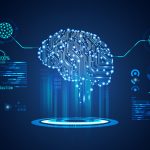


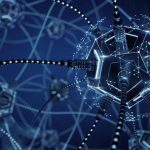
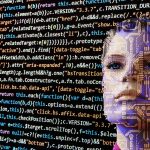
 Deep learning
Deep learning uses several layers of neurons between the network’s inputs and outputs. The multiple layers can progressively extract higher-level features from the raw input. For example, in image processing, lower layers may identify edges, while higher layers may identify the concepts relevant to a human such as digits or letters or faces.
Deep learning has drastically improved the performance of programs in many important subfields of artificial intelligence, including computer vision, speech recognition, image classification and others. The reason that deep learning performs so well in so many applications is not known as of 2023.
Deep learning
Deep learning uses several layers of neurons between the network’s inputs and outputs. The multiple layers can progressively extract higher-level features from the raw input. For example, in image processing, lower layers may identify edges, while higher layers may identify the concepts relevant to a human such as digits or letters or faces.
Deep learning has drastically improved the performance of programs in many important subfields of artificial intelligence, including computer vision, speech recognition, image classification and others. The reason that deep learning performs so well in so many applications is not known as of 2023.
 The sudden success of deep learning in 2012–2015 did not occur because of some new discovery or theoretical breakthrough (deep neural networks and backpropagation had been described by many people, as far back as the 1950s) but because of two factors: the incredible increase in computer power (including the hundred-fold increase in speed by switching to GPUs) and the availability of vast amounts of training data, especially the giant curated datasets used for benchmark testing, such as ImageNet.
Specialized hardware and software
In the late 2010s, graphics processing units (GPUs) that were increasingly designed with AI-specific enhancements and used with specialized TensorFlow software, had replaced previously used central processing unit (CPUs) as the dominant means for large-scale (commercial and academic) machine learning models’ training. Historically, specialized languages, such as Lisp, Prolog, and others, had been used.
The sudden success of deep learning in 2012–2015 did not occur because of some new discovery or theoretical breakthrough (deep neural networks and backpropagation had been described by many people, as far back as the 1950s) but because of two factors: the incredible increase in computer power (including the hundred-fold increase in speed by switching to GPUs) and the availability of vast amounts of training data, especially the giant curated datasets used for benchmark testing, such as ImageNet.
Specialized hardware and software
In the late 2010s, graphics processing units (GPUs) that were increasingly designed with AI-specific enhancements and used with specialized TensorFlow software, had replaced previously used central processing unit (CPUs) as the dominant means for large-scale (commercial and academic) machine learning models’ training. Historically, specialized languages, such as Lisp, Prolog, and others, had been used.
Applications
 Artificial Intelligence (AI) and machine learning technology is used in most of the essential applications of the 2020s, including: search engines (such as Google Search), targeting online advertisements, recommendation systems (offered by Netflix, YouTube or Amazon), driving internet traffic, targeted advertising (AdSense, Facebook), virtual assistants (such as Siri or Alexa), autonomous vehicles (including drones, ADAS and self-driving cars), automatic language translation (Microsoft Translator, Google Translate), facial recognition (Apple’s Face ID or Microsoft’s DeepFace and Google’s FaceNet) and image labeling (used by Facebook, Apple’s iPhoto and TikTok).
There are also thousands of successful AI applications used to solve specific problems for specific industries or institutions. In a 2017 survey, one in five companies reported they had incorporated “AI” in some offerings or processes. A few examples are energy storage, medical diagnosis, military logistics, applications that predict the result of judicial decisions, foreign policy, or supply chain management.
Game playing programs have been used since the 1950s to demonstrate and test AI’s most advanced techniques. Deep Blue became the first computer chess-playing system to beat a reigning world chess champion, Garry Kasparov, on 11 May 1997. In 2011, in a Jeopardy! quiz show exhibition match, IBM’s question answering system, Watson, defeated the two greatest Jeopardy! champions, Brad Rutter and Ken Jennings, by a significant margin.
Artificial Intelligence (AI) and machine learning technology is used in most of the essential applications of the 2020s, including: search engines (such as Google Search), targeting online advertisements, recommendation systems (offered by Netflix, YouTube or Amazon), driving internet traffic, targeted advertising (AdSense, Facebook), virtual assistants (such as Siri or Alexa), autonomous vehicles (including drones, ADAS and self-driving cars), automatic language translation (Microsoft Translator, Google Translate), facial recognition (Apple’s Face ID or Microsoft’s DeepFace and Google’s FaceNet) and image labeling (used by Facebook, Apple’s iPhoto and TikTok).
There are also thousands of successful AI applications used to solve specific problems for specific industries or institutions. In a 2017 survey, one in five companies reported they had incorporated “AI” in some offerings or processes. A few examples are energy storage, medical diagnosis, military logistics, applications that predict the result of judicial decisions, foreign policy, or supply chain management.
Game playing programs have been used since the 1950s to demonstrate and test AI’s most advanced techniques. Deep Blue became the first computer chess-playing system to beat a reigning world chess champion, Garry Kasparov, on 11 May 1997. In 2011, in a Jeopardy! quiz show exhibition match, IBM’s question answering system, Watson, defeated the two greatest Jeopardy! champions, Brad Rutter and Ken Jennings, by a significant margin.
 In March 2016, AlphaGo won 4 out of 5 games of Go in a match with Go champion Lee Sedol, becoming the first computer Go-playing system to beat a professional Go player without handicaps. Then it defeated Ke Jie in 2017, who at the time continuously held the world No. 1 ranking for two years.
Other programs handle imperfect-information games; such as for poker at a superhuman level, Pluribus and Cepheus. DeepMind in the 2010s developed a “generalized artificial intelligence” that could learn many diverse Atari games on its own.
In the early 2020s, generative AI gained widespread prominence. ChatGPT, based on GPT-3, and other large language models, were tried by 14% of Americans adults. The increasing realism and ease-of-use of AI-based text-to-image generators such as Midjourney, DALL-E, and Stable Diffusion sparked a trend of viral AI-generated photos. Widespread attention was gained by a fake photo of Pope Francis wearing a white puffer coat, the fictional arrest of Donald Trump, and a hoax of an attack on the Pentagon, as well as the usage in professional creative arts.
AlphaFold 2 (2020) demonstrated the ability to approximate, in hours rather than months, the 3D structure of a protein.
In March 2016, AlphaGo won 4 out of 5 games of Go in a match with Go champion Lee Sedol, becoming the first computer Go-playing system to beat a professional Go player without handicaps. Then it defeated Ke Jie in 2017, who at the time continuously held the world No. 1 ranking for two years.
Other programs handle imperfect-information games; such as for poker at a superhuman level, Pluribus and Cepheus. DeepMind in the 2010s developed a “generalized artificial intelligence” that could learn many diverse Atari games on its own.
In the early 2020s, generative AI gained widespread prominence. ChatGPT, based on GPT-3, and other large language models, were tried by 14% of Americans adults. The increasing realism and ease-of-use of AI-based text-to-image generators such as Midjourney, DALL-E, and Stable Diffusion sparked a trend of viral AI-generated photos. Widespread attention was gained by a fake photo of Pope Francis wearing a white puffer coat, the fictional arrest of Donald Trump, and a hoax of an attack on the Pentagon, as well as the usage in professional creative arts.
AlphaFold 2 (2020) demonstrated the ability to approximate, in hours rather than months, the 3D structure of a protein. Ethics
Artificial Intelligence (AI), like any powerful technology, has potential benefits and potential risks. AI may be able to advance science and find solutions for serious problems: Demis Hassabis of Deep Mind hopes to “solve intelligence, and then use that to solve everything else”. However, as the use of AI has become widespread, several unintended consequences and risks have been identified.
Anyone looking to use machine learning as part of real-world, in-production systems needs to factor ethics into their AI training processes and strive to avoid bias. This is especially true when using AI algorithms that are inherently unexplainable in deep learning.
Risks and harm
 Privacy and copyright
Machine learning algorithms require large amounts of data. The techniques used to acquire this data have raised concerns about privacy, surveillance and copyright.
Technology companies collect a wide range of data from their users, including online activity, geolocation data, video and audio. For example, in order to build speech recognition algorithms, Amazon others have recorded millions of private conversations and allowed temps to listen to and transcribe some of them. Opinions about this widespread surveillance range from those who see it as a necessary evil to those for whom it is clearly unethical and a violation of the right to privacy.
AI developers argue that this is the only way to deliver valuable applications. and have developed several techniques that attempt to preserve privacy while still obtaining the data, such as data aggregation, de-identification and differential privacy. Since 2016, some privacy experts, such as Cynthia Dwork, began to view privacy in terms of fairness — Brian Christian wrote that experts have pivoted “from the question of ‘what they know’ to the question of ‘what they’re doing with it’.”.
Privacy and copyright
Machine learning algorithms require large amounts of data. The techniques used to acquire this data have raised concerns about privacy, surveillance and copyright.
Technology companies collect a wide range of data from their users, including online activity, geolocation data, video and audio. For example, in order to build speech recognition algorithms, Amazon others have recorded millions of private conversations and allowed temps to listen to and transcribe some of them. Opinions about this widespread surveillance range from those who see it as a necessary evil to those for whom it is clearly unethical and a violation of the right to privacy.
AI developers argue that this is the only way to deliver valuable applications. and have developed several techniques that attempt to preserve privacy while still obtaining the data, such as data aggregation, de-identification and differential privacy. Since 2016, some privacy experts, such as Cynthia Dwork, began to view privacy in terms of fairness — Brian Christian wrote that experts have pivoted “from the question of ‘what they know’ to the question of ‘what they’re doing with it’.”.
 Generative AI is often trained on unlicensed copyrighted works, including in domains such as images or computer code; the output is then used under a rationale of “fair use”. Experts disagree about how well, and under what circumstances, this rationale will hold up in courts of law; relevant factors may include “the purpose and character of the use of the copyrighted work” and “the effect upon the potential market for the copyrighted work”. In 2023, leading authors (including John Grisham and Jonathan Franzen) sued AI companies for using their work to train generative AI.
Misinformation
YouTube, Facebook and others use recommender systems to guide users to more content. These AI programs were given the goal of maximizing user engagement (that is, the only goal was to keep people watching). The AI learned that users tended to choose misinformation, conspiracy theories, and extreme partisan content, and, to keep them watching, the AI recommended more of it. Users also tended to watch more content on the same subject, so the AI led people into filter bubbles where they received multiple versions of the same misinformation.
Generative AI is often trained on unlicensed copyrighted works, including in domains such as images or computer code; the output is then used under a rationale of “fair use”. Experts disagree about how well, and under what circumstances, this rationale will hold up in courts of law; relevant factors may include “the purpose and character of the use of the copyrighted work” and “the effect upon the potential market for the copyrighted work”. In 2023, leading authors (including John Grisham and Jonathan Franzen) sued AI companies for using their work to train generative AI.
Misinformation
YouTube, Facebook and others use recommender systems to guide users to more content. These AI programs were given the goal of maximizing user engagement (that is, the only goal was to keep people watching). The AI learned that users tended to choose misinformation, conspiracy theories, and extreme partisan content, and, to keep them watching, the AI recommended more of it. Users also tended to watch more content on the same subject, so the AI led people into filter bubbles where they received multiple versions of the same misinformation.
 This convinced many users that the misinformation was true, and ultimately undermined trust in institutions, the media and the government. The AI program had correctly learned to maximize its goal, but the result was harmful to society. After the U.S. election in 2016, major technology companies took steps to mitigate the problem.
In 2022, generative AI began to create images, audio, video and text that are indistinguishable from real photographs, recordings, films or human writing. It is possible for bad actors to use this technology to create massive amounts of misinformation or propaganda. AI pioneer Geoffrey Hinton expressed concern about AI enabling “authoritarian leaders to manipulate their electorates” on a large scale, among other risks.
Algorithmic bias and fairness
This convinced many users that the misinformation was true, and ultimately undermined trust in institutions, the media and the government. The AI program had correctly learned to maximize its goal, but the result was harmful to society. After the U.S. election in 2016, major technology companies took steps to mitigate the problem.
In 2022, generative AI began to create images, audio, video and text that are indistinguishable from real photographs, recordings, films or human writing. It is possible for bad actors to use this technology to create massive amounts of misinformation or propaganda. AI pioneer Geoffrey Hinton expressed concern about AI enabling “authoritarian leaders to manipulate their electorates” on a large scale, among other risks.
Algorithmic bias and fairness
 Machine learning applications will be biased if they learn from biased data. The developers may not be aware that the bias exists. Bias can be introduced by the way training data is selected and by the way a model is deployed. If a biased algorithm is used to make decisions that can seriously harm people (as it can in medicine, finance, recruitment, housing or policing) then the algorithm may cause discrimination. Fairness in machine learning is the study of how to prevent the harm caused by algorithmic bias. It has become serious area of academic study within AI. Researchers have discovered it is not always possible to define “fairness” in a way that satisfies all stakeholders.
On June 28, 2015, Google Photos’s new image labeling feature mistakenly identified Jacky Alcine and a friend as “gorillas” because they were black. The system was trained on a dataset that contained very few images of black people, a problem called “sample size disparity”. Google “fixed” this problem by preventing the system from labelling anything as a “gorilla”. Eight years later, in 2023, Google Photos still could not identify a gorilla, and neither could similar products from Apple, Facebook, Microsoft and Amazon.
Machine learning applications will be biased if they learn from biased data. The developers may not be aware that the bias exists. Bias can be introduced by the way training data is selected and by the way a model is deployed. If a biased algorithm is used to make decisions that can seriously harm people (as it can in medicine, finance, recruitment, housing or policing) then the algorithm may cause discrimination. Fairness in machine learning is the study of how to prevent the harm caused by algorithmic bias. It has become serious area of academic study within AI. Researchers have discovered it is not always possible to define “fairness” in a way that satisfies all stakeholders.
On June 28, 2015, Google Photos’s new image labeling feature mistakenly identified Jacky Alcine and a friend as “gorillas” because they were black. The system was trained on a dataset that contained very few images of black people, a problem called “sample size disparity”. Google “fixed” this problem by preventing the system from labelling anything as a “gorilla”. Eight years later, in 2023, Google Photos still could not identify a gorilla, and neither could similar products from Apple, Facebook, Microsoft and Amazon.
 A program can make biased decisions even if the data does not explicitly mention a problematic feature (such as “race” or “gender”). The feature will correlate with other features (like “address”, “shopping history” or “first name”), and the program will make the same decisions based on these features as it would on “race” or “gender”. Moritz Hardt said “the most robust fact in this research area is that fairness through blindness doesn’t work.”
Bias and unfairness may go undetected because the developers are overwhelmingly white and male: among AI engineers, about 4% are black and 20% are women.
At its 2022 Conference on Fairness, Accountability, and Transparency (ACM FAccT 2022) the Association for Computing Machinery, in Seoul, South Korea, presented and published findings recommending that until AI and robotics systems are demonstrated to be free of bias mistakes, they are unsafe and the use of self-learning neural networks trained on vast, unregulated sources of flawed internet data should be curtailed.
A program can make biased decisions even if the data does not explicitly mention a problematic feature (such as “race” or “gender”). The feature will correlate with other features (like “address”, “shopping history” or “first name”), and the program will make the same decisions based on these features as it would on “race” or “gender”. Moritz Hardt said “the most robust fact in this research area is that fairness through blindness doesn’t work.”
Bias and unfairness may go undetected because the developers are overwhelmingly white and male: among AI engineers, about 4% are black and 20% are women.
At its 2022 Conference on Fairness, Accountability, and Transparency (ACM FAccT 2022) the Association for Computing Machinery, in Seoul, South Korea, presented and published findings recommending that until AI and robotics systems are demonstrated to be free of bias mistakes, they are unsafe and the use of self-learning neural networks trained on vast, unregulated sources of flawed internet data should be curtailed.







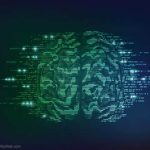

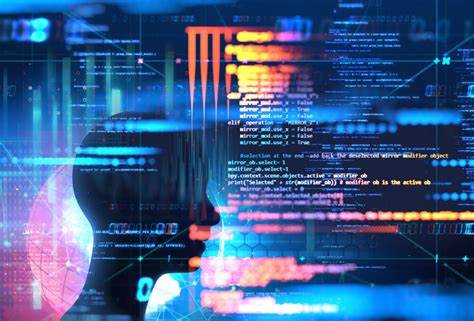 Lack of transparency
Most modern AI applications can not explain how they have reached a decision. The large amount of relationships between inputs and outputs in deep neural networks and resulting complexity makes it difficult for even an expert to explain how they produced their outputs, making them a black box.
There have been many cases where a machine learning program passed rigorous tests, but nevertheless learned something different than what the programmers intended. For example, Justin Ko and Roberto Novoa developed a system that could identify skin diseases better than medical professionals, however it classified any image with a ruler as “cancerous”, because pictures of malignancies typically include a ruler to show the scale.
Lack of transparency
Most modern AI applications can not explain how they have reached a decision. The large amount of relationships between inputs and outputs in deep neural networks and resulting complexity makes it difficult for even an expert to explain how they produced their outputs, making them a black box.
There have been many cases where a machine learning program passed rigorous tests, but nevertheless learned something different than what the programmers intended. For example, Justin Ko and Roberto Novoa developed a system that could identify skin diseases better than medical professionals, however it classified any image with a ruler as “cancerous”, because pictures of malignancies typically include a ruler to show the scale.
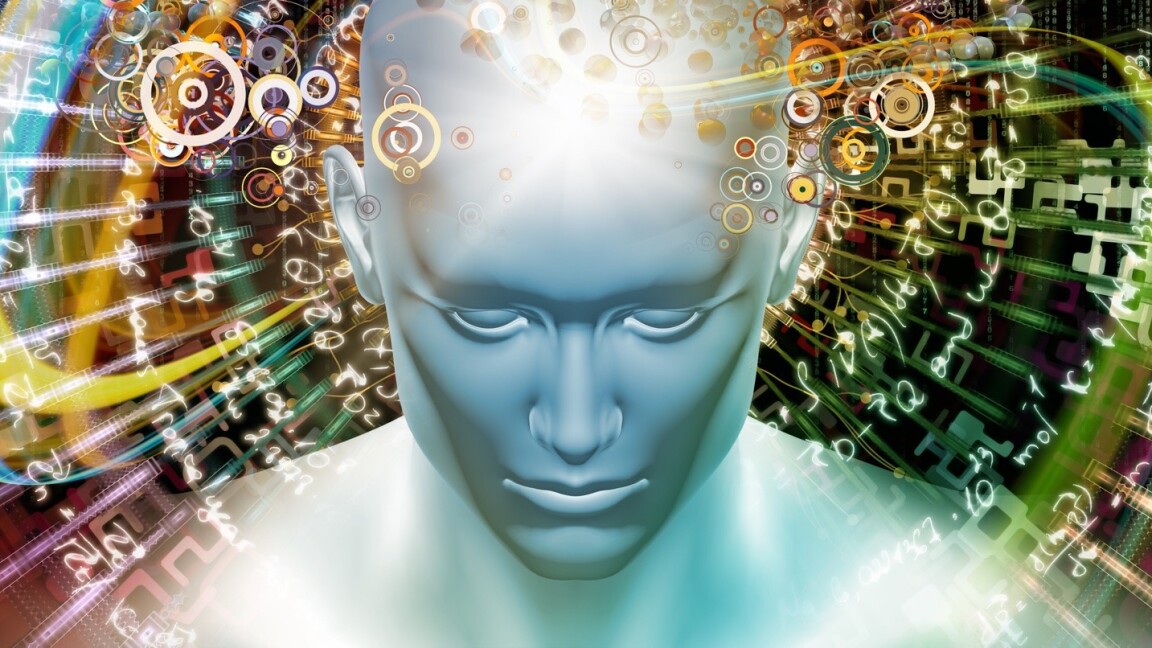 A more dangerous example was discovered by Rich Caruana in 2015: a machine learning system that accurately predicted risk of death classified a patient that was over 65, asthma and difficulty breathing as “low risk”. Further research showed that in high-risk cases like this, the hospital would allocate more resources and save the patient’s life, decreasing the risk measured by the program. Mistakes like these become obvious when we know how the program has reached a decision. Without an explanation, these problems may not not be discovered until after they have caused harm.
A second issue is that people who have been harmed by an algorithm’s decision have a right to an explanation. Doctors, for example, are required to clearly and completely explain the reasoning behind any decision they make. Early drafts of the European Union’s General Data Protection Regulation in 2016 included an explicit statement that this right exists. Industry experts noted that this is an unsolved problem with no solution in sight. Regulators argued that nevertheless the harm is real: if the problem has no solution, the tools should not be used.
A more dangerous example was discovered by Rich Caruana in 2015: a machine learning system that accurately predicted risk of death classified a patient that was over 65, asthma and difficulty breathing as “low risk”. Further research showed that in high-risk cases like this, the hospital would allocate more resources and save the patient’s life, decreasing the risk measured by the program. Mistakes like these become obvious when we know how the program has reached a decision. Without an explanation, these problems may not not be discovered until after they have caused harm.
A second issue is that people who have been harmed by an algorithm’s decision have a right to an explanation. Doctors, for example, are required to clearly and completely explain the reasoning behind any decision they make. Early drafts of the European Union’s General Data Protection Regulation in 2016 included an explicit statement that this right exists. Industry experts noted that this is an unsolved problem with no solution in sight. Regulators argued that nevertheless the harm is real: if the problem has no solution, the tools should not be used.
 DARPA established the XAI (“Explainable Artificial Intelligence”) program in 2014 to try and solve these problems.
There are several potential solutions to the transparency problem. Multitask learning provides a large number of outputs in addition to the target classification. These other outputs can help developers deduce what the network has learned. Deconvolution, DeepDream and other generative methods can allow developers to see what different layers of a deep network have learned and produce output that can suggest what the network is learning. Supersparse linear integer models use learning to identify the most important features, rather than the classification. Simple addition of these features can then make the classification (i.e. learning is used to create a scoring system classifier, which is transparent).
Bad actors and weaponized AI
DARPA established the XAI (“Explainable Artificial Intelligence”) program in 2014 to try and solve these problems.
There are several potential solutions to the transparency problem. Multitask learning provides a large number of outputs in addition to the target classification. These other outputs can help developers deduce what the network has learned. Deconvolution, DeepDream and other generative methods can allow developers to see what different layers of a deep network have learned and produce output that can suggest what the network is learning. Supersparse linear integer models use learning to identify the most important features, rather than the classification. Simple addition of these features can then make the classification (i.e. learning is used to create a scoring system classifier, which is transparent).
Bad actors and weaponized AI
 A lethal autonomous weapon is a machine that locates, selects and engages human targets without human supervision. By 2015, over fifty countries were reported to be researching battlefield robots. These weapons are considered especially dangerous for several reasons: if they kill an innocent person it is not clear who should be held accountable, it is unlikely they will reliably choose targets, and, if produced at scale, they are potentially weapons of mass destruction. In 2014, 30 nations (including China) supported a ban on autonomous weapons under the United Nations’ Convention on Certain Conventional Weapons, however the United States and others disagreed.
AI provides a number of tools that are particularly useful for authoritarian governments: smart spyware, face recognition and voice recognition allow widespread surveillance; such surveillance allows machine learning to classify potential enemies of the state and can prevent them from hiding; recommendation systems can precisely target propaganda and misinformation for maximum effect; deepfakes and generative AI aid in producing misinformation; advanced AI can make authoritarian centralized decision making more competitive with liberal and decentralized systems such as markets.
Terrorists, criminals and rogue states can use weaponized AI such as advanced digital warfare and lethal autonomous weapons. and.. Machine-learning AI is also able to design tens of thousands of toxic molecules in a matter of hours.
A lethal autonomous weapon is a machine that locates, selects and engages human targets without human supervision. By 2015, over fifty countries were reported to be researching battlefield robots. These weapons are considered especially dangerous for several reasons: if they kill an innocent person it is not clear who should be held accountable, it is unlikely they will reliably choose targets, and, if produced at scale, they are potentially weapons of mass destruction. In 2014, 30 nations (including China) supported a ban on autonomous weapons under the United Nations’ Convention on Certain Conventional Weapons, however the United States and others disagreed.
AI provides a number of tools that are particularly useful for authoritarian governments: smart spyware, face recognition and voice recognition allow widespread surveillance; such surveillance allows machine learning to classify potential enemies of the state and can prevent them from hiding; recommendation systems can precisely target propaganda and misinformation for maximum effect; deepfakes and generative AI aid in producing misinformation; advanced AI can make authoritarian centralized decision making more competitive with liberal and decentralized systems such as markets.
Terrorists, criminals and rogue states can use weaponized AI such as advanced digital warfare and lethal autonomous weapons. and.. Machine-learning AI is also able to design tens of thousands of toxic molecules in a matter of hours.
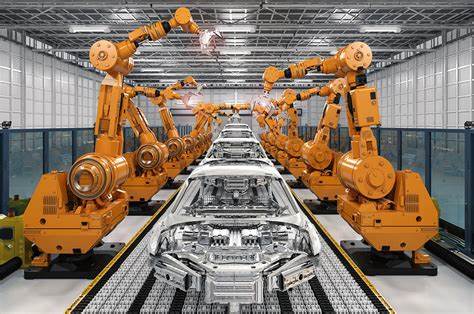 Technological unemployment
From the early days of the development of artificial intelligence there have been arguments, for example those put forward by Weizenbaum, about whether tasks that can be done by computers actually should be done by them, given the difference between computers and humans, and between quantitative calculation and qualitative, value-based judgement.
Economists have frequently highlighted the risks of redundancies from AI, and speculated about unemployment if there is no adequate social policy for full employment.
In the past, technology has tended to increase rather than reduce total employment, but economists acknowledge that “we’re in uncharted territory” with AI. A survey of economists showed disagreement about whether the increasing use of robots and AI will cause a substantial increase in long-term unemployment, but they generally agree that it could be a net benefit if productivity gains are redistributed. Risk estimates vary; for example, in the 2010s Michael Osborne and Carl Benedikt Frey estimated 47% of U.S. jobs are at “high risk” of potential automation, while an OECD report classified only 9% of U.S. jobs as “high risk”. The methodology of speculating about future employment levels has been criticised as lacking evidential foundation, and for implying that technology (rather than social policy) creates unemployment (as opposed to redundancies).
Technological unemployment
From the early days of the development of artificial intelligence there have been arguments, for example those put forward by Weizenbaum, about whether tasks that can be done by computers actually should be done by them, given the difference between computers and humans, and between quantitative calculation and qualitative, value-based judgement.
Economists have frequently highlighted the risks of redundancies from AI, and speculated about unemployment if there is no adequate social policy for full employment.
In the past, technology has tended to increase rather than reduce total employment, but economists acknowledge that “we’re in uncharted territory” with AI. A survey of economists showed disagreement about whether the increasing use of robots and AI will cause a substantial increase in long-term unemployment, but they generally agree that it could be a net benefit if productivity gains are redistributed. Risk estimates vary; for example, in the 2010s Michael Osborne and Carl Benedikt Frey estimated 47% of U.S. jobs are at “high risk” of potential automation, while an OECD report classified only 9% of U.S. jobs as “high risk”. The methodology of speculating about future employment levels has been criticised as lacking evidential foundation, and for implying that technology (rather than social policy) creates unemployment (as opposed to redundancies).
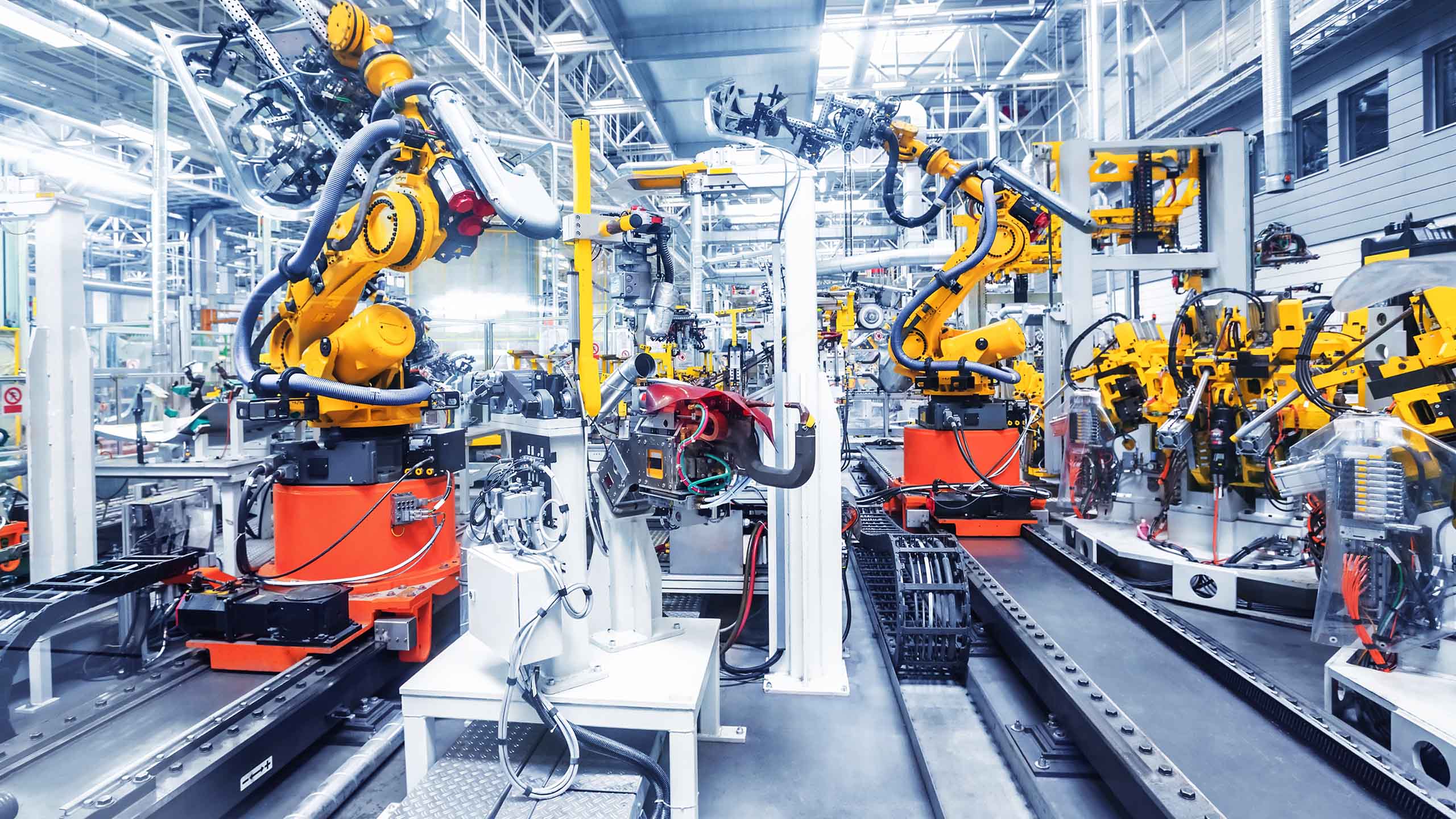 Unlike previous waves of automation, many middle-class jobs may be eliminated by artificial intelligence; The Economist stated in 2015 that “the worry that AI could do to white-collar jobs what steam power did to blue-collar ones during the Industrial Revolution” is “worth taking seriously”. Jobs at extreme risk range from paralegals to fast food cooks, while job demand is likely to increase for care-related professions ranging from personal healthcare to the clergy.
In April 2023, it was reported that 70% of the jobs for Chinese video game illlustrators had been eliminated by generative artificial intelligence.
Existential risk
It has been argued AI will become so powerful that humanity may irreversibly lose control of it. This could, as the physicist Stephen Hawking puts it, “spell the end of the human race”. This scenario has been common in science fiction, when a computer or robot suddenly develops a human-like “self-awareness” (or “sentience” or “consciousness”) and becomes a malevolent character. These sci-fi scenarios are misleading in several ways.
Unlike previous waves of automation, many middle-class jobs may be eliminated by artificial intelligence; The Economist stated in 2015 that “the worry that AI could do to white-collar jobs what steam power did to blue-collar ones during the Industrial Revolution” is “worth taking seriously”. Jobs at extreme risk range from paralegals to fast food cooks, while job demand is likely to increase for care-related professions ranging from personal healthcare to the clergy.
In April 2023, it was reported that 70% of the jobs for Chinese video game illlustrators had been eliminated by generative artificial intelligence.
Existential risk
It has been argued AI will become so powerful that humanity may irreversibly lose control of it. This could, as the physicist Stephen Hawking puts it, “spell the end of the human race”. This scenario has been common in science fiction, when a computer or robot suddenly develops a human-like “self-awareness” (or “sentience” or “consciousness”) and becomes a malevolent character. These sci-fi scenarios are misleading in several ways.
 First, AI does not require human-like “sentience” to be an existential risk. Modern AI programs are given specific goals and use learning and intelligence to achieve them. Philosopher Nick Bostrom argued that if one gives almost any goal to a sufficiently powerful AI, it may choose to destroy humanity to achieve it (he used the example of a paperclip factory manager). Stuart Russell gives the example of household robot that tries to find a way to kill its owner to prevent it from being unplugged, reasoning that “you can’t fetch the coffee if you’re dead.” In order to be safe for humanity, a superintelligence would have to be genuinely aligned with humanity’s morality and values so that it is “fundamentally on our side”.
Second, Yuval Noah Harari argues that AI does not require a robot body or physical control to pose an existential risk. The essential parts of civilization are not physical. Things like ideologies, law, government, money and the economy are made of language; they exist because there are stories that billions of people believe. The current prevalence of misinformation suggests that an AI could use language to convince people to believe anything, even to take actions that are destructive.
First, AI does not require human-like “sentience” to be an existential risk. Modern AI programs are given specific goals and use learning and intelligence to achieve them. Philosopher Nick Bostrom argued that if one gives almost any goal to a sufficiently powerful AI, it may choose to destroy humanity to achieve it (he used the example of a paperclip factory manager). Stuart Russell gives the example of household robot that tries to find a way to kill its owner to prevent it from being unplugged, reasoning that “you can’t fetch the coffee if you’re dead.” In order to be safe for humanity, a superintelligence would have to be genuinely aligned with humanity’s morality and values so that it is “fundamentally on our side”.
Second, Yuval Noah Harari argues that AI does not require a robot body or physical control to pose an existential risk. The essential parts of civilization are not physical. Things like ideologies, law, government, money and the economy are made of language; they exist because there are stories that billions of people believe. The current prevalence of misinformation suggests that an AI could use language to convince people to believe anything, even to take actions that are destructive.
 The opinions amongst experts and industry insiders are mixed, with sizable fractions both concerned and unconcerned by risk from eventual superintelligent AI. Personalities such as Stephen Hawking, Bill Gates, Elon Musk have expressed concern about existential risk from AI. In the early 2010’s, experts argued that the risks are too distant in the future to warrant research or that humans will be valuable from the perspective of a superintelligent machine.
However, after 2016, the study of current and future risks and possible solutions became a serious area of research. AI pioneers including Fei-Fei Li, Geoffrey Hinton, Yoshua Bengio, Cynthia Breazeal, Rana el Kaliouby, Demis Hassabis, Joy Buolamwini, and Sam Altman have expressed concerns about the risks of AI and in 2023 many leading AI experts issued the joint statement that “Mitigating the risk of extinction from AI should be a global priority alongside other societal-scale risks such as pandemics and nuclear war”
The opinions amongst experts and industry insiders are mixed, with sizable fractions both concerned and unconcerned by risk from eventual superintelligent AI. Personalities such as Stephen Hawking, Bill Gates, Elon Musk have expressed concern about existential risk from AI. In the early 2010’s, experts argued that the risks are too distant in the future to warrant research or that humans will be valuable from the perspective of a superintelligent machine.
However, after 2016, the study of current and future risks and possible solutions became a serious area of research. AI pioneers including Fei-Fei Li, Geoffrey Hinton, Yoshua Bengio, Cynthia Breazeal, Rana el Kaliouby, Demis Hassabis, Joy Buolamwini, and Sam Altman have expressed concerns about the risks of AI and in 2023 many leading AI experts issued the joint statement that “Mitigating the risk of extinction from AI should be a global priority alongside other societal-scale risks such as pandemics and nuclear war”
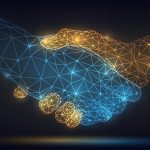







Ethical machines and alignment
 Friendly AI are machines that have been designed from the beginning to minimize risks and to make choices that benefit humans. Eliezer Yudkowsky, who coined the term, argues that developing friendly AI should be a higher research priority: it may require a large investment and it must be completed before AI becomes an existential risk.
Machines with intelligence have the potential to use their intelligence to make ethical decisions. The field of machine ethics provides machines with ethical principles and procedures for resolving ethical dilemmas. The field of machine ethics is also called computational morality, and was founded at an AAAI symposium in 2005.
Other approaches include Wendell Wallach’s “artificial moral agents” and Stuart J. Russell’s three principles for developing provably beneficial machines.
Friendly AI are machines that have been designed from the beginning to minimize risks and to make choices that benefit humans. Eliezer Yudkowsky, who coined the term, argues that developing friendly AI should be a higher research priority: it may require a large investment and it must be completed before AI becomes an existential risk.
Machines with intelligence have the potential to use their intelligence to make ethical decisions. The field of machine ethics provides machines with ethical principles and procedures for resolving ethical dilemmas. The field of machine ethics is also called computational morality, and was founded at an AAAI symposium in 2005.
Other approaches include Wendell Wallach’s “artificial moral agents” and Stuart J. Russell’s three principles for developing provably beneficial machines.
Regulation
The regulation of artificial intelligence is the development of public sector policies and laws for promoting and regulating artificial intelligence (AI); it is therefore related to the broader regulation of algorithms. The regulatory and policy landscape for AI is an emerging issue in jurisdictions globally.
According to AI Index at Stanford, the annual number of AI-related laws passed in the 127 survey countries jumped from one passed in 2016 to 37 passed in 2022 alone.
 Between 2016 and 2020, more than 30 countries adopted dedicated strategies for AI. Most EU member states had released national AI strategies, as had Canada, China, India, Japan, Mauritius, the Russian Federation, Saudi Arabia, United Arab Emirates, US and Vietnam. Others were in the process of elaborating their own AI strategy, including Bangladesh, Malaysia and Tunisia.
The Global Partnership on Artificial Intelligence was launched in June 2020, stating a need for AI to be developed in accordance with human rights and democratic values, to ensure public confidence and trust in the technology. Henry Kissinger, Eric Schmidt, and Daniel Huttenlocher published a joint statement in November 2021 calling for a government commission to regulate AI. In 2023, OpenAI leaders published recommendations for the governance of superintelligence, which they believe may happen in less than 10 years.
Between 2016 and 2020, more than 30 countries adopted dedicated strategies for AI. Most EU member states had released national AI strategies, as had Canada, China, India, Japan, Mauritius, the Russian Federation, Saudi Arabia, United Arab Emirates, US and Vietnam. Others were in the process of elaborating their own AI strategy, including Bangladesh, Malaysia and Tunisia.
The Global Partnership on Artificial Intelligence was launched in June 2020, stating a need for AI to be developed in accordance with human rights and democratic values, to ensure public confidence and trust in the technology. Henry Kissinger, Eric Schmidt, and Daniel Huttenlocher published a joint statement in November 2021 calling for a government commission to regulate AI. In 2023, OpenAI leaders published recommendations for the governance of superintelligence, which they believe may happen in less than 10 years.
 In a 2022 Ipsos survey, attitudes towards AI varied greatly by country; 78% of Chinese citizens, but only 35% of Americans, agreed that “products and services using AI have more benefits than drawbacks”. A 2023 Reuters/Ipsos poll found that 61% of Americans agree, and 22% disagree, that AI poses risks to humanity.
In a 2023 Fox News poll, 35% of Americans thought it “very important”, and an additional 41% thought it “somewhat important”, for the federal government to regulate AI, versus 13% responding “not very important” and 8% responding “not at all important”.
In November 2023, a global AI safety summit was held in Bletchley Park to discuss the near and far term risks of AI and the possibility of mandatory and voluntary regulatory frameworks.
In a 2022 Ipsos survey, attitudes towards AI varied greatly by country; 78% of Chinese citizens, but only 35% of Americans, agreed that “products and services using AI have more benefits than drawbacks”. A 2023 Reuters/Ipsos poll found that 61% of Americans agree, and 22% disagree, that AI poses risks to humanity.
In a 2023 Fox News poll, 35% of Americans thought it “very important”, and an additional 41% thought it “somewhat important”, for the federal government to regulate AI, versus 13% responding “not very important” and 8% responding “not at all important”.
In November 2023, a global AI safety summit was held in Bletchley Park to discuss the near and far term risks of AI and the possibility of mandatory and voluntary regulatory frameworks.
 Between 2016 and 2020, more than 30 countries adopted dedicated strategies for AI. Most EU member states had released national AI strategies, as had Canada, China, India, Japan, Mauritius, the Russian Federation, Saudi Arabia, United Arab Emirates, US and Vietnam. Others were in the process of elaborating their own AI strategy, including Bangladesh, Malaysia and Tunisia.
The Global Partnership on Artificial Intelligence was launched in June 2020, stating a need for AI to be developed in accordance with human rights and democratic values, to ensure public confidence and trust in the technology. Henry Kissinger, Eric Schmidt, and Daniel Huttenlocher published a joint statement in November 2021 calling for a government commission to regulate AI. In 2023, OpenAI leaders published recommendations for the governance of superintelligence, which they believe may happen in less than 10 years.
Between 2016 and 2020, more than 30 countries adopted dedicated strategies for AI. Most EU member states had released national AI strategies, as had Canada, China, India, Japan, Mauritius, the Russian Federation, Saudi Arabia, United Arab Emirates, US and Vietnam. Others were in the process of elaborating their own AI strategy, including Bangladesh, Malaysia and Tunisia.
The Global Partnership on Artificial Intelligence was launched in June 2020, stating a need for AI to be developed in accordance with human rights and democratic values, to ensure public confidence and trust in the technology. Henry Kissinger, Eric Schmidt, and Daniel Huttenlocher published a joint statement in November 2021 calling for a government commission to regulate AI. In 2023, OpenAI leaders published recommendations for the governance of superintelligence, which they believe may happen in less than 10 years.
 In a 2022 Ipsos survey, attitudes towards AI varied greatly by country; 78% of Chinese citizens, but only 35% of Americans, agreed that “products and services using AI have more benefits than drawbacks”. A 2023 Reuters/Ipsos poll found that 61% of Americans agree, and 22% disagree, that AI poses risks to humanity.
In a 2023 Fox News poll, 35% of Americans thought it “very important”, and an additional 41% thought it “somewhat important”, for the federal government to regulate AI, versus 13% responding “not very important” and 8% responding “not at all important”.
In November 2023, a global AI safety summit was held in Bletchley Park to discuss the near and far term risks of AI and the possibility of mandatory and voluntary regulatory frameworks.
In a 2022 Ipsos survey, attitudes towards AI varied greatly by country; 78% of Chinese citizens, but only 35% of Americans, agreed that “products and services using AI have more benefits than drawbacks”. A 2023 Reuters/Ipsos poll found that 61% of Americans agree, and 22% disagree, that AI poses risks to humanity.
In a 2023 Fox News poll, 35% of Americans thought it “very important”, and an additional 41% thought it “somewhat important”, for the federal government to regulate AI, versus 13% responding “not very important” and 8% responding “not at all important”.
In November 2023, a global AI safety summit was held in Bletchley Park to discuss the near and far term risks of AI and the possibility of mandatory and voluntary regulatory frameworks. 